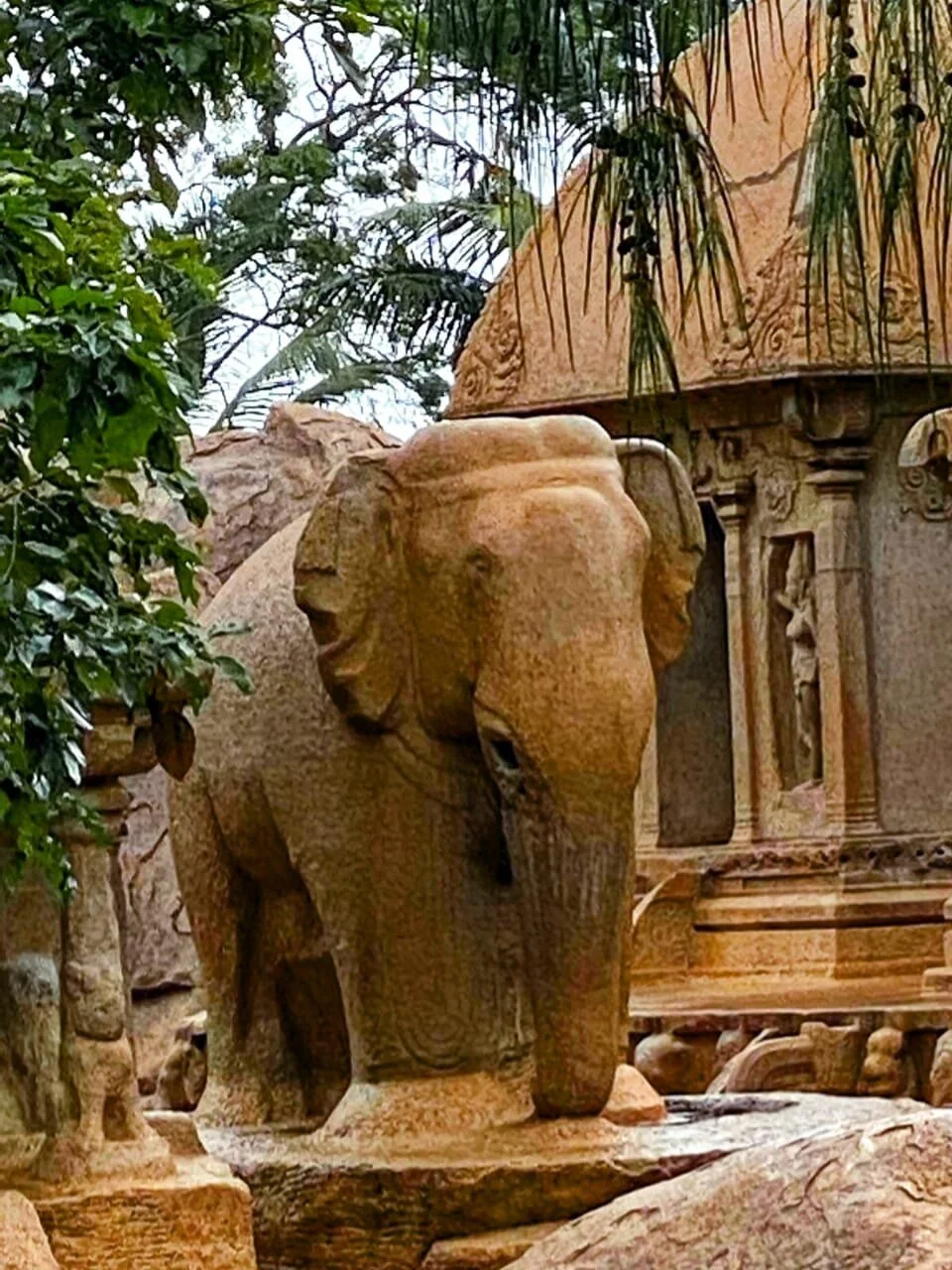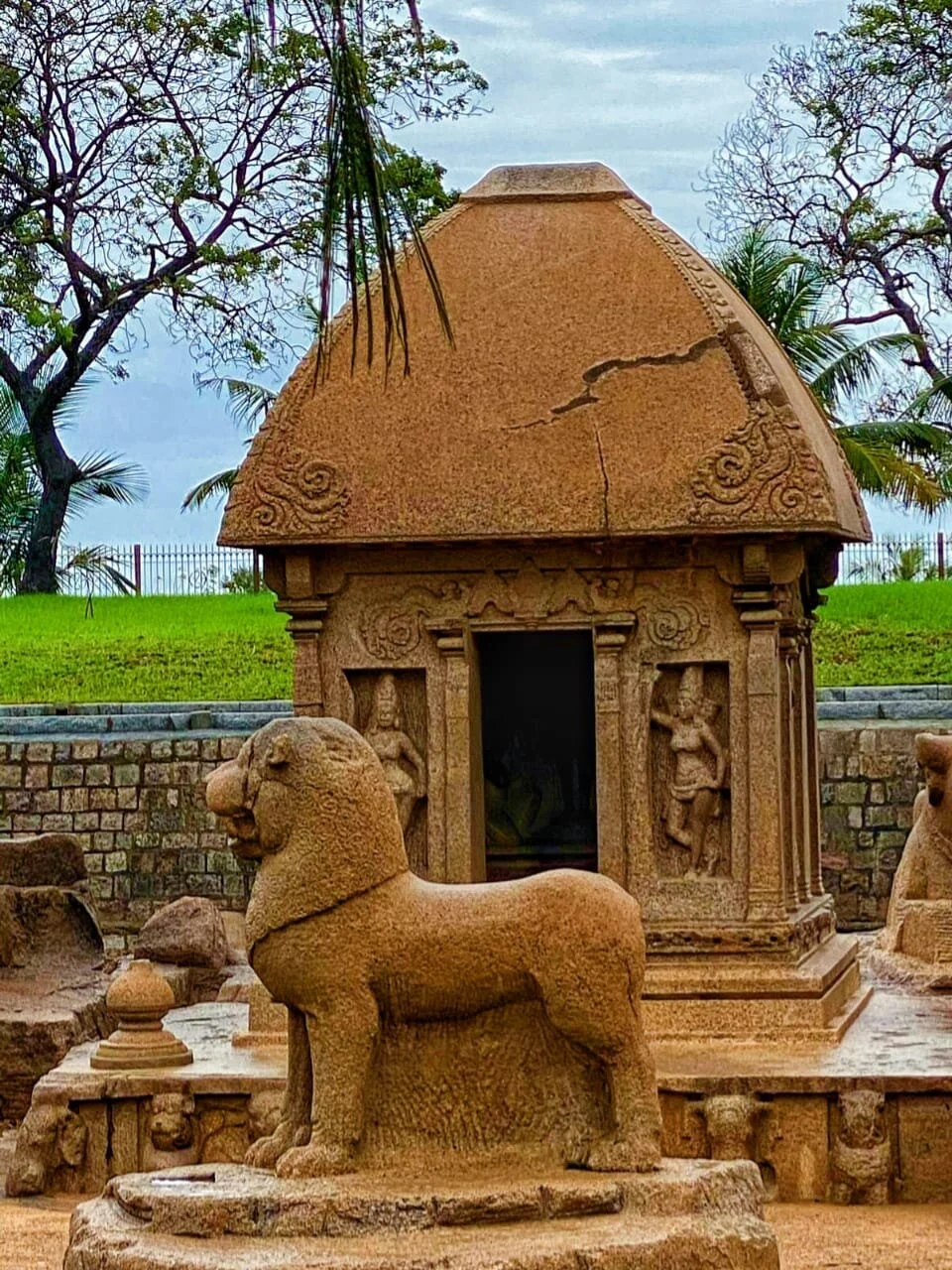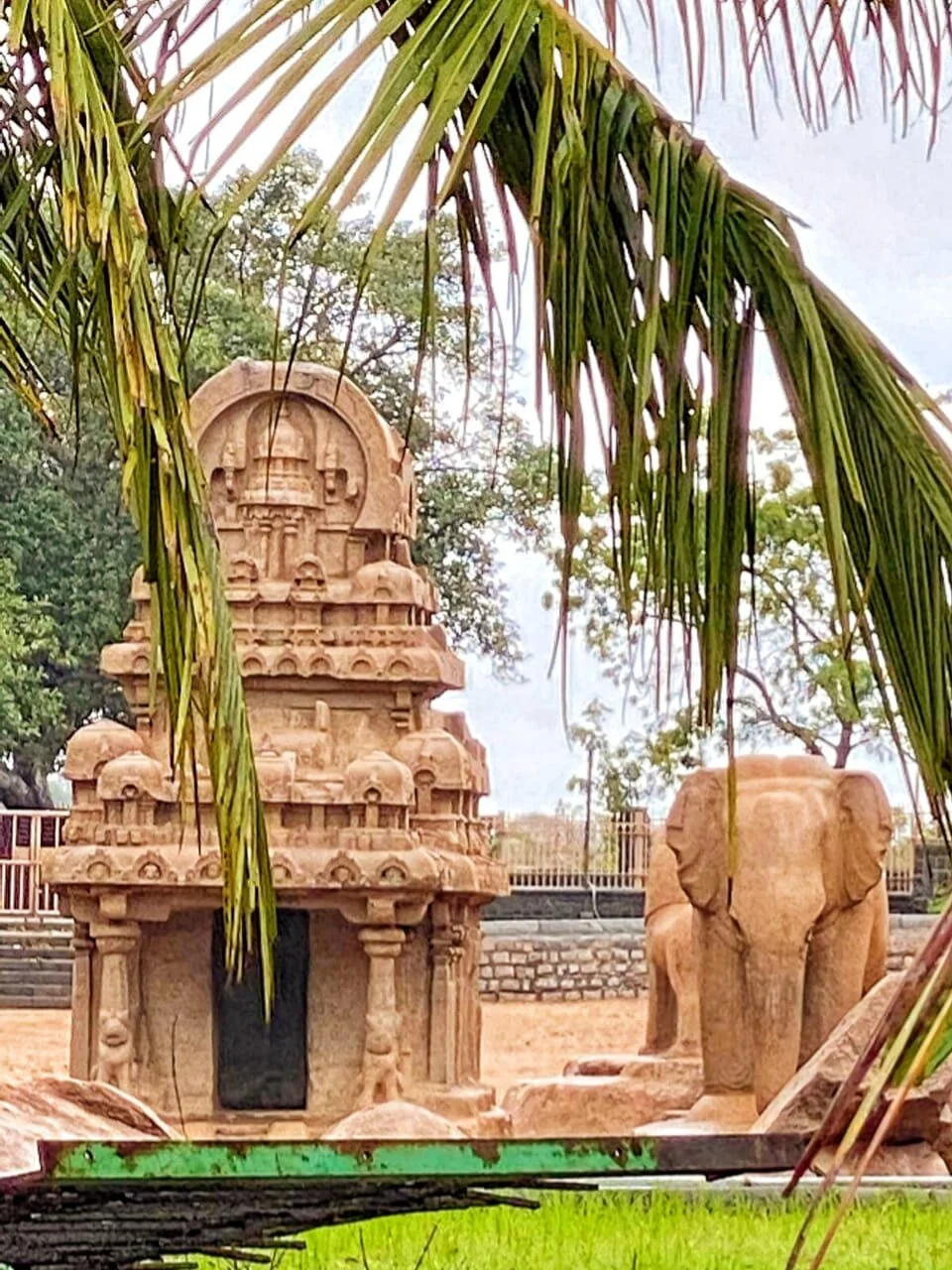Pallava Monoliths
“How do you carve an elephant from a 20 Ton Granite monolith block.
Well you chip away everything that does not look like an elephant.”
Well then how do you scoop away five entire temple structure from a massive overgrown pink granite rocks . Meet the father son duo who managed this feat over two generations during King Narasimhavarman I (630–668 AD) major construction and consecration was completed. This was then duly continued and took shape during the reign of King Mahendra Varma II from 668–672 CE. After the passing away of Mahendra Varma II, the structures seem to have been abandoned by future generations of the Pallavas.
Meet the Pallava Elephant - alongside a Rock Cut Temple (side view of Draupadi Ratha)
The Monlith Simha which goes on to become the Pallava Mascot alongside a Rock Cut Temple - Draupadi Ratha
The Nakula Sahadeva Ratha
The Bheema Ratha
Dharma Raja Ratha
A closer examination of the pillar bases (lions with horns – a mythical creation) was created, and this would later go on to be their mascot and emblem in their flag.
Trademark Pallava Pillars with “Simha Yali” - notice the legs, Pallava Mascot
A beautiful piece of art just below the ground level – right next to the famous Shore Temple at Mammalapuram. This was forgotten during the flood of times and was covered with sand until the tsunami of 2004. Post the tsunami, when the water drained everywhere, it would not drain here. When people got together to investigate that, they discovered this beauty.
Varaha Sculpted at the Shore Temple (Image courtesy : Google Images)
The ingenuity of the sculptor and his team, who conceived and implemented this. Varaha Avatar of Vishnu (according to the Hindu Puranas) is shown to be the savior of Earth drowning in the Oceans! This piece has been captured by thie ingenious piece of art, lost in the travails of time but rediscovered after the tsunami.
Into this world of art, sculpture and Kings, we hope to explore more of the Pallavas in a later blog.
VigneshG






